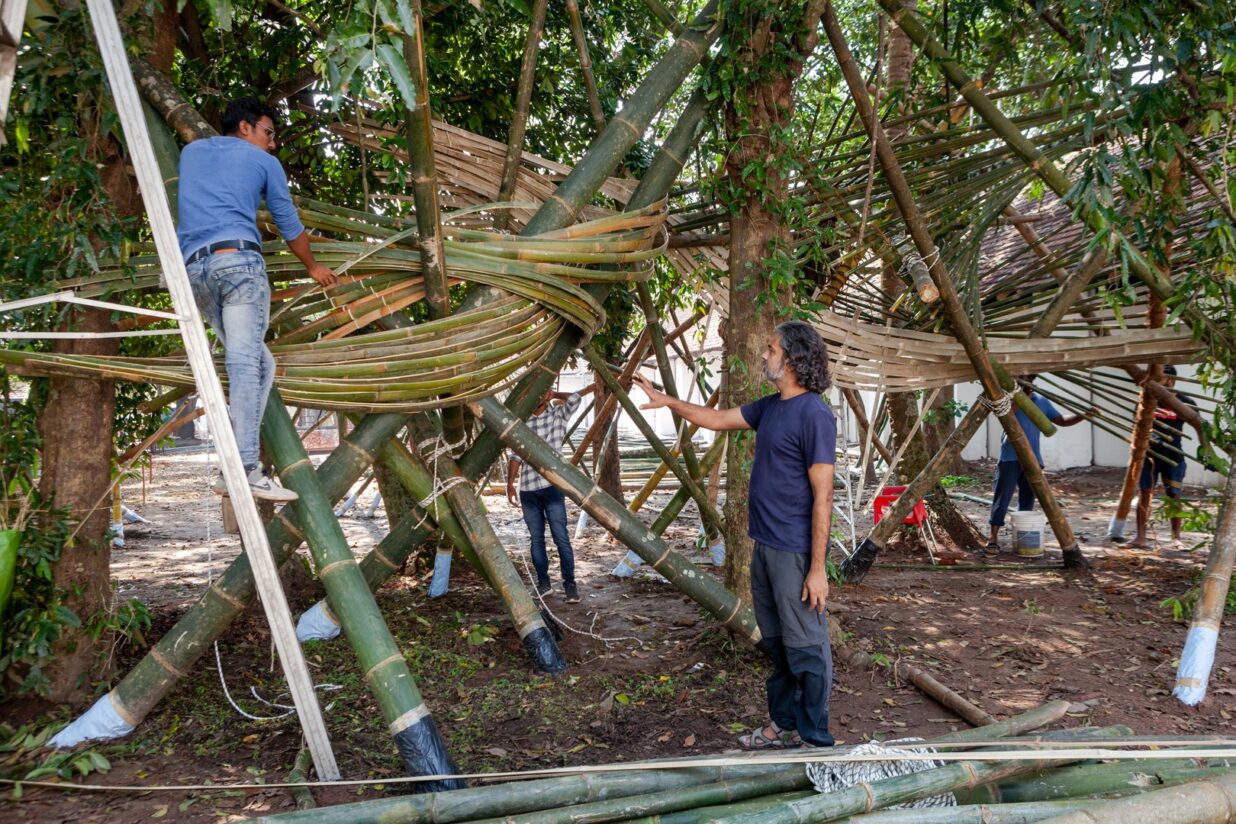Kochi-Muzris Biennale 2022: Diverse, Everyday Stories in Focus
Asim Waqif has created a wonder world within Aspinwall House with bamboo, coir, pandanus leaves and panambu as part of the Kochi-Muzris Biennale 2022, inaugurated by the Chief Minister of Kerala on December 12, 2022.
In today’s age, various forces are attempting to take away diversity by implementing medieval ideologies like one race, one language and one way of dressing. It is of great significance that the Biennale gives people from different backgrounds an opportunity to display their artistic talents in a democratic manner. This was Pinarayi Vijayan, the Chief Minister of Kerala’s opening statement as he inaugurated the 5th edition of Kochi-Muziris Biennale at Fort Kochi Parade Ground on December 12, 2022. Though inaugurated on December 12, the Biennale will open all its exhibition halls only on December 23, 2022.

The Inauguration of the Kochi-Muzris Biennale 2022 by the Chief Minister of Kerala, Pinarayi Vijayan.
“The arrival of the international-level contemporary art festival to our land is an achievement beyond the dreams which we realised through the first Biennale, held on December 12, ten years ago. We received unstinted support from artists and art lovers alike for that Biennale and further, all throughout its splendid growth. To top it all, the State Government too has extended its full cooperation and support from the start. Kochi-Muziris Biennale has evolved into people’s biennale through these years. The Biennale will act as a window to bring global art and tourism to Kochi and Kerala,” said Bose Krishnamachari, Kerala-Muziris Biennale foundation president.
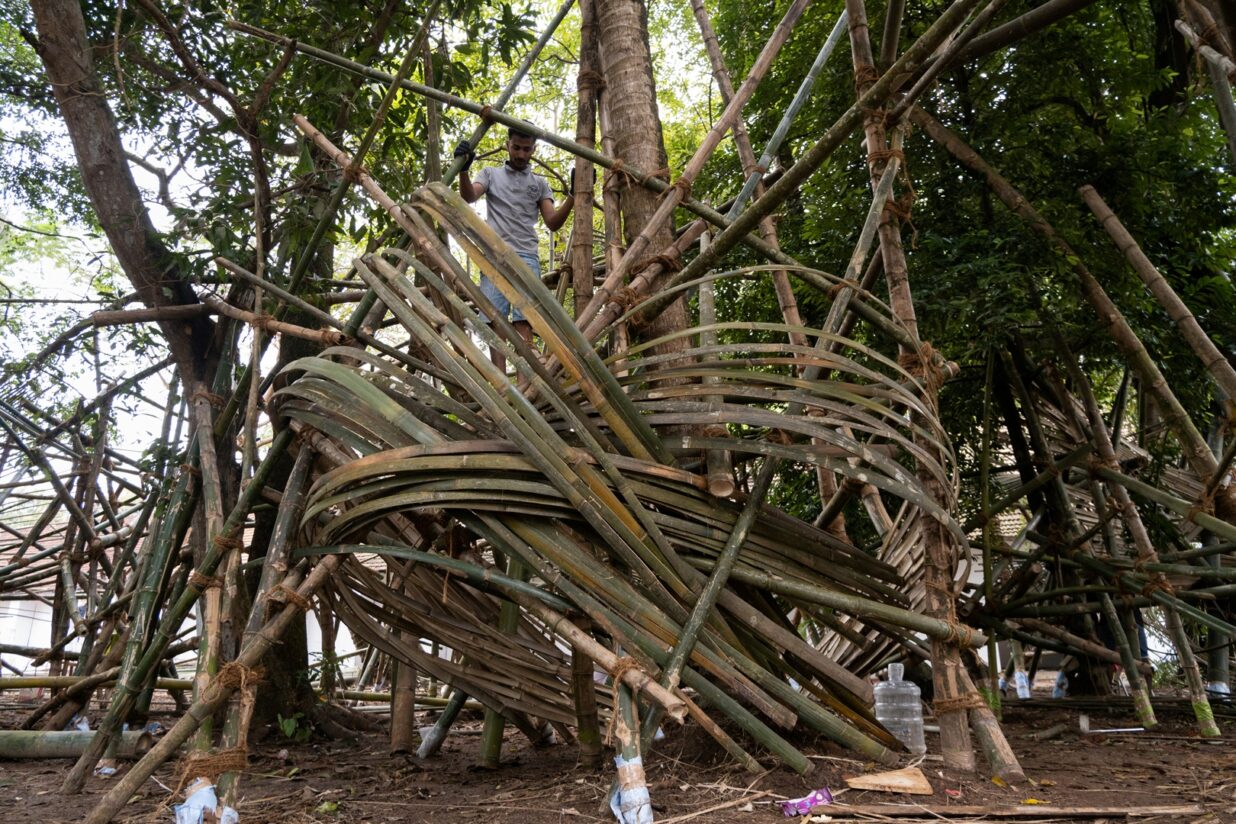 With the theme ‘In Our Veins Flow Ink and Fire ‘, the amalgam of cosmopolitan art and culture this time will feature 200 major creative projects of 90 artists from over 24 countries that will be exhibited at 14 venues till April 10, revealed Krishnamachari.
With the theme ‘In Our Veins Flow Ink and Fire ‘, the amalgam of cosmopolitan art and culture this time will feature 200 major creative projects of 90 artists from over 24 countries that will be exhibited at 14 venues till April 10, revealed Krishnamachari.
The Students’ Biennale, encouraging young talents, and the Art By Children, aimed at reaching out to school students, will run parallel to the main event. Various cultural programmes too are included according to the Biennale organisers.
Besides the main venues, Aspinwall House and Pepper House, the exhibition of artworks and installations will be held at TKM Warehouse, Dutch Warehouse, Kashi Art Cafe, Kashi Town House, and David Hall, all in and around Fort Kochi. The Durbar Hall Art Gallery in the heart of Ernakulam city is also a Biennale venue, where nearly 150 creative artworks of 34 of the finest contemporary artists in the state will be displayed.
The country’s largest contemporary art exhibition was launched in 2012, and this year marks the 10th anniversary of the biennial event. The 5th edition, originally scheduled in 2020 and postponed twice due to the Covid pandemic, is finally being realised this year and has had a shaky start with rains playing havoc and delaying the opening of many exhibitions within the Biennale.
The 4th edition in 2018 saw over 600,000 art enthusiasts from across the world calling in at one of the top international art destinations. The famed art festival not only enables Kochi to grow within the global tourism map, but is also touted as the catalyst behind the state’s emerging tourism sector.
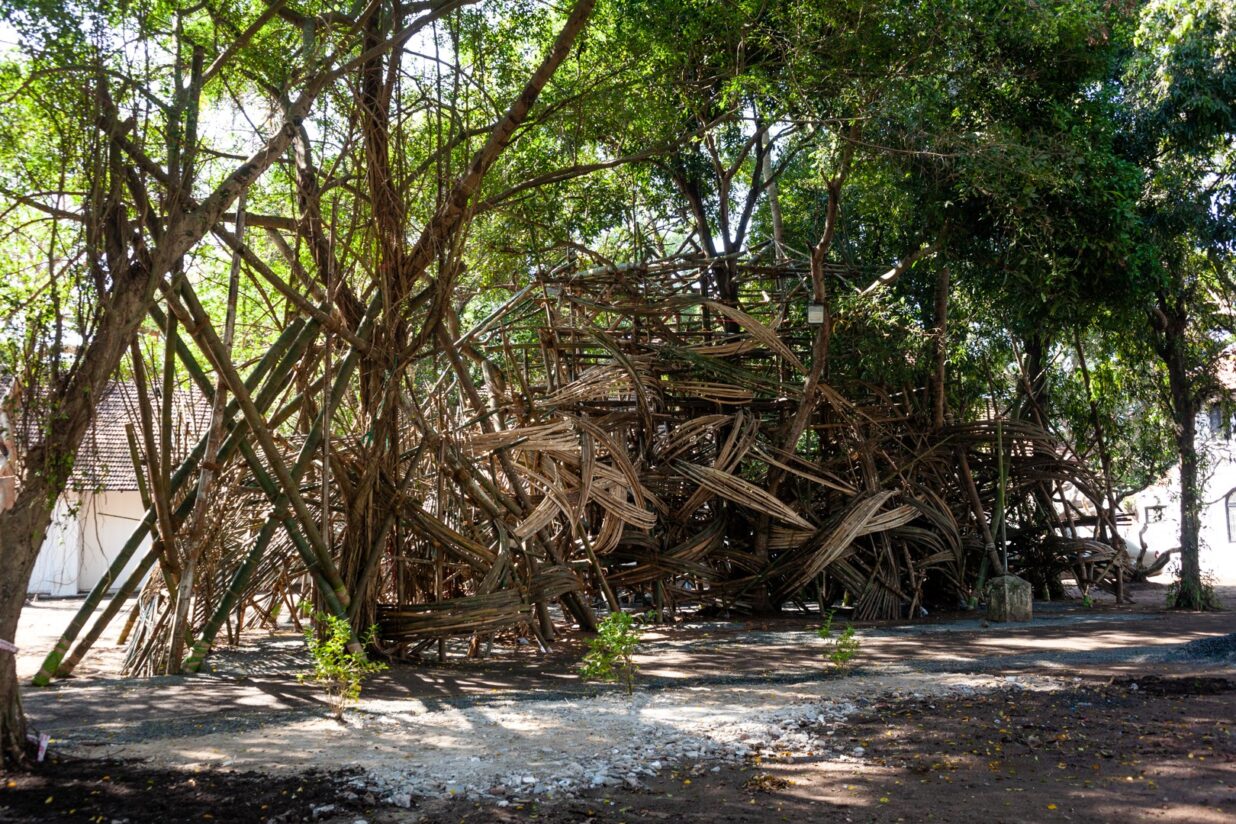 SCALE brings to its readers installations and exhibitions that cannot be missed within the Kochi-Biennale.
SCALE brings to its readers installations and exhibitions that cannot be missed within the Kochi-Biennale.
The installation titled ‘Improvise,’ made chiefly of bamboo over 20 feet height at the compound of the main venue of the Aspinwall House, delivers a novel experience, not just because of its artistic excellence but also due to the message of social commitment it reflects. It is the work od Asim Waqif, who studied architecture at the School of Planning and Architecture, Delhi. After initially working as an art director for film and television, he later started making independent video and documentaries before moving into a dedicated art practice. His recent projects have attempted to crossover between architecture, art and design, with a strong contextual reference to contemporary urban planning (or the lack thereof) and the politics of occupying, intervening in, and using public spaces. Some of his projects have developed within abandoned and derelict buildings in the city that act like hidden activity spaces for the marginalised.
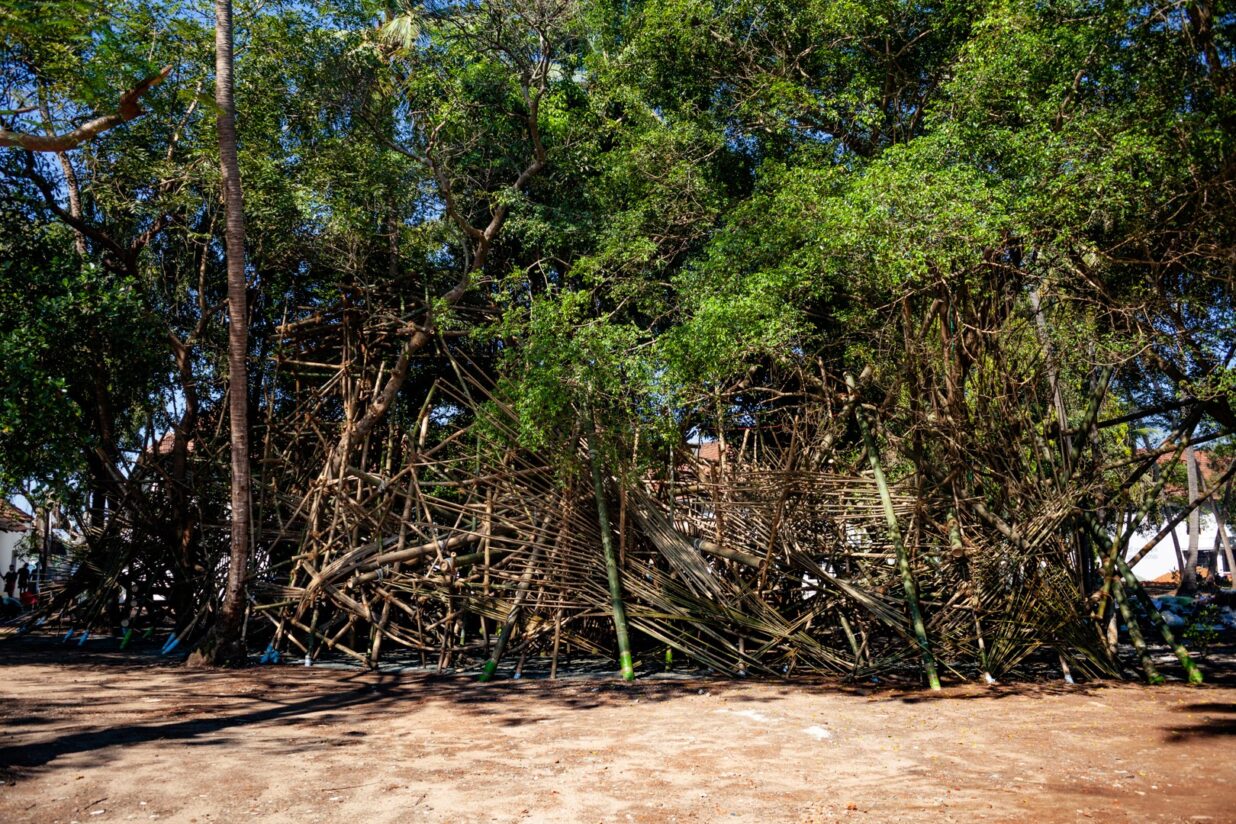 This installation at the Biennale consists of musical instruments made of bamboo to light-emitting objects, and even a cradle on which one can lean and swing endlessly commonly thought of as insignificant get such a profound meaning in the hands of an artist.
This installation at the Biennale consists of musical instruments made of bamboo to light-emitting objects, and even a cradle on which one can lean and swing endlessly commonly thought of as insignificant get such a profound meaning in the hands of an artist.
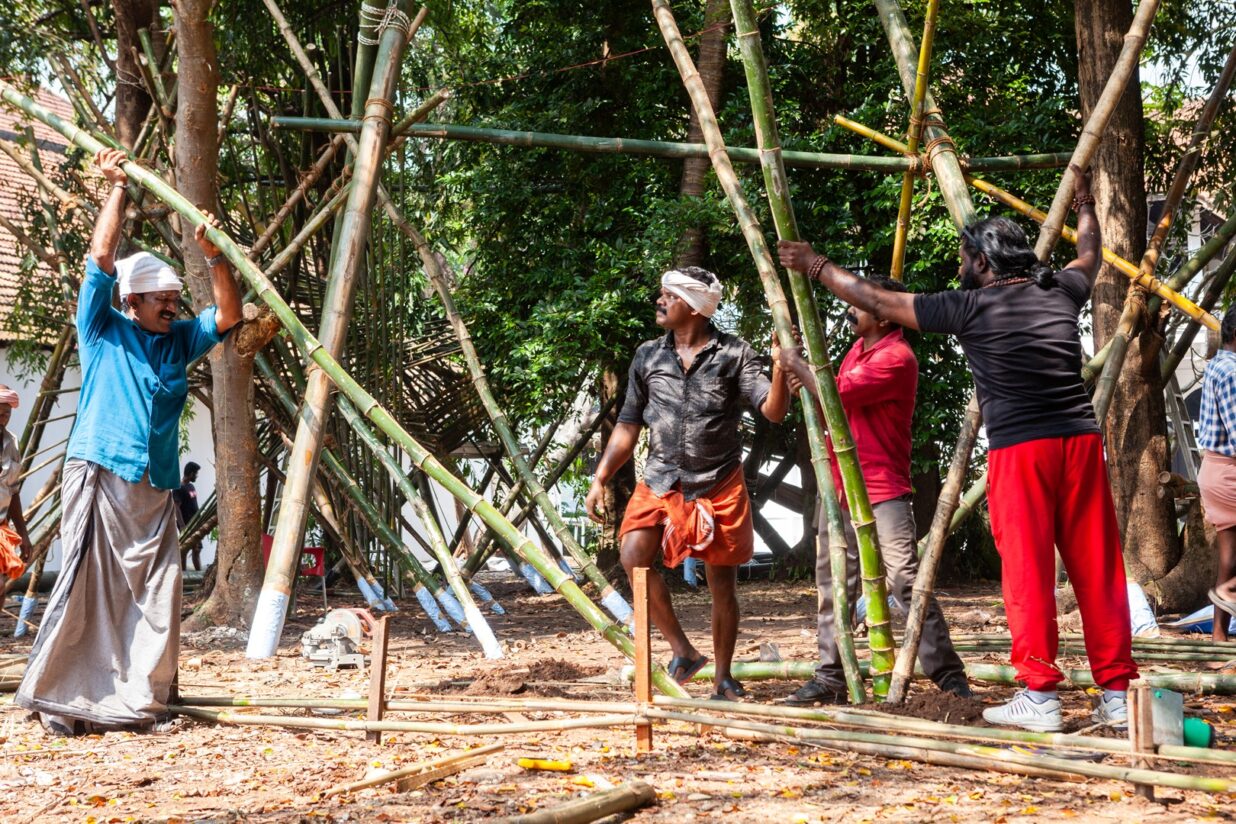 Waqif says that he intended to drive home the message that insignificant material to one person can be of importance to others and the same insignificant products gains value through art. He is trying to establish the relevance of things that are discarded in day-to-day life.
Waqif says that he intended to drive home the message that insignificant material to one person can be of importance to others and the same insignificant products gains value through art. He is trying to establish the relevance of things that are discarded in day-to-day life.
“These days, when discussions focus on sustainability, the solutions such as converting to renewable energy sources and making the food system more energy efficient, etc., are being projected as innovative ideas. These are, in fact, traditional ideas,” he says.
He points out that traditional, localised technologies and materials have got much relevance in these modern times and they can’t be simply neglected.


